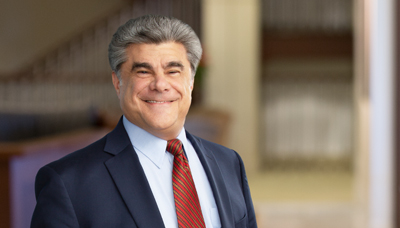From a standing start when the Inflation Reduction Act (IRA) was enacted in August 2022, the Environmental Protection Agency (EPA) has been on a nonstop sprint to establish and implement the Greenhouse Gas Reduction Fund (GGRF) and obligate $27 billion Congress appropriated for GGRF grants and loans to support clean energy investments by Sept. 30, 2024.
On April 4, 2024, the EPA reached a major milestone when it announced its selections for $20 billion in GGRF grant awards under two competitions to fund a national clean financing (or green bank) network: three selections under the $14 billion National Clean Investment Fund (NCIF), and five selections under the $6 billion Clean Communities Investment Accelerator (CCIA). The EPA anticipates that the eight awards to nonprofits, which range from $400 million to $6.97 billion, will be finalized by July 2024, and that in the aggregate the green bank network will finance tens of thousands of projects.
According to the EPA, “this national clean financing network will mobilize private capital to reduce climate and air pollution while also reducing energy costs, improving public health, and creating good-paying clean energy jobs in communities across the country, especially in low-income and disadvantaged communities.” The White House added that: “This historic investment will support a wide range of climate and clean energy projects, including distributed clean power generation and storage, net-zero retrofits of homes and small businesses, and zero-emission transportation, all of which can lower energy costs for families and improve housing affordability while tackling the climate crisis.”
Over the next seven years, seven dollars in private funds are expected to be invested for every dollar the grant funds to the network. These grants will also advance the president’s Justice40 Initiative: 70 percent of the grant funds are dedicated for use in disadvantaged communities, 20 percent for rural communities, and nearly 7.5 percent will go to tribal communities.
The EPA says that the projects funded will reduce or avoid up to 40 million metric tons of greenhouse gas (GHG) emissions annually, which is comparable to the emissions from nearly 9 million typical passenger vehicles. The administration anticipates that these emission cutbacks will play a crucial role in meeting its climate objectives of reducing emissions 50 to 52 percent below 2005 levels in 2030 and achieving net-zero emissions no later than 2050.
While there has been some pushback on the awards from Republicans, the announcement of the selections received substantial praise and support from labor and environmental leaders and Democratic elected officials across the country.
The EPA has scheduled public webinars on the NCIF selections on April 10 and on the CCIA selections on April 11. Webinar recordings will be posted on the EPA’s GGRF webpage along with details for any additional webinars that are announced.
Background to Formation and Implementation of the GGRF
The GGRF is a first of its kind $27 billion U.S. federal investment to combat the climate crisis. The concept for this kind of green bank financing was first implemented in the U.S. by Connecticut in 2011. Since then, according to the Congressional Research Service, green banks were established for a variety of purposes by a number of governmental entities, before the GGRF was created as part of the IRA:
“Governments have created green banks in various national and local contexts to achieve a range of goals, including meeting GHG emissions targets, supporting local community development, lowering energy costs, developing low-carbon and climate-resilient technology markets, creating jobs, and lowering the cost of capital for specified investments. Governments have established green banks at the national level (e.g., Australia, New Zealand, Malaysia, Switzerland, and the United Kingdom), at the state or district level (e.g., California, Connecticut, Hawaii, New York, Rhode Island, and the District of Columbia), and at the county level (e.g., Montgomery County, MD).”
According to the EPA, all of the programs funded by the GGRF “will finance clean technology deployment nationally, finance clean technology deployment in low-income and disadvantaged communities while simultaneously building the capacity of community lenders that serve those communities, and spur adoption of clean distributed solar energy that lowers energy bills for millions of Americans in low-income and disadvantaged communities.”
Per the IRA, the EPA was supposed to begin distributing dollars from the GGRF in February 2023; but the agency quickly fell behind. The path the EPA followed to make up lost time included:
- In mid-October 2022, the EPA charged the Environmental Financial Advisory Board (EFAB) to evaluate the objectives, program structure, and execution, reporting, and accountability of the GGRF. On Jan. 3, 2023, the EFAB delivered its guidance and considerations on options for the EPA to consider when designing, executing, and evaluating the GGRF, which recognized the constraints imposed by “the extremely compressed timeline of this charge.”
- On Feb. 14, 2023, the EPA issued its initial guidance that outlined future competitions to distribute grant funding to meet the GGRF objectives: “(1) reduce emissions of greenhouse gases and other air pollutants; (2) deliver benefits to low-income and disadvantaged communities; and (3) mobilize financing and private capital to stimulate additional deployment of greenhouse gas and air pollution reducing projects.”
- On April 19, 2023, the EPA issued its implementation framework for the GGRF, which included detailed descriptions of the anticipated components for three grant competitions to scale deployment of clean technologies nationally, build community clean financing capacity locally, and spur adoption of clean distributed solar energy.
- On June 28 and July 24, 2023, the EPA formally launched the three GGRF competitions: the $7 billion Solar for All program, and the $20 billion national clean financing network, which includes $14 billion for the NCIF and $6 billion for the CCIA.
The April 4 selection of awardees for the $20 billion national green bank network reflects the ongoing effort by the administration to meet the Sept. 30 IRA deadline for obligating the GGRF appropriated funds, and to expend as much of the funding authorized by the IRA as possible before the next presidential election.
The EPA plans to announce its selections for the third competition, the $7 billion Solar for All program that will fund rooftop and community solar, later this spring.
GGRF Grant Selectees That Will Create a National Clean Financing Network
The eight selectees that will share $14 billion from the NCIF and $6 billion from the CCIA will build out a national network of community-led financial institutions that will finance climate and clean energy projects across the country, with priority for such financing going to low-income and disadvantaged communities. Selections were made based on a robust application evaluation process that included expert review panels and interviews with senior EPA officials, followed by recommendations to the selection officer from a multi-disciplinary senior review team drawn from five federal agencies.
NCIF Selectees That Will Share $14 Billion
The three selected NCIF applicants will partner with the private sector, community organizations, and others to establish national clean financing institutions that will deliver accessible, affordable financing for and deployment of clean technology projects nationwide. Benefits are expected to include energy bill savings, cleaner air, and job creation for millions of Americans. Each of the applicants surpassed the EPA requirement that at least 40 percent of NCIF funds flow to low-income and disadvantaged communities applicants.
- Climate United Fund ($6.97 billion) is a nonprofit formed by Calvert Impact to partner with two U.S. Treasury-certified Community Development Financial Institutions (CDFIs), Self-Help Ventures Fund and Community Preservation Corporation. According to Beth Bafford, CEO of Climate United: “We are ready to work together to ensure we meet the program’s three ambitious objectives: dramatically reducing carbon pollution, creating direct benefits for American families, and catalyzing market transformation; all of which need to happen in tandem in order to meet our country’s climate goals equitably.” At least 60 percent of its NCIF funded investments will be deployed in low-income and disadvantaged communities, 20 percent in rural communities, and 10 percent in Tribal communities.
- Coalition for Green Capital (CGC) ($5 billion) is a nonprofit with more than a decade of experience helping establish and working with dozens of state, local, and nonprofit green banks. At the time of its selection, CGC stated, “We look forward to working with the agency and other award winners to move as rapidly as possible to deployment of this record amount of public-private investment capital. CGC already has more than $30 billion of demand for its award funds and believes that private-sector investors are prepared to add more than twice that to the projects jumpstarted by public capital.” At least 50 percent of CGC’s investments will be in low-income and disadvantaged communities.
- Power Forward Communities (PFC) ($2 billion) is a nonprofit coalition of housing, climate, and community investment groups dedicated to decarbonizing and transforming American housing, saving homeowners and renters money, investing in stronger communities, and helping meet national climate goals. PFC plans to use the NCIF funding to provide financing to homeowners and apartment building owners across the country to upgrade appliances, weatherize homes, and make them more efficient and less expensive to operate. PFC will also leverage public and private investments to help government partners achieve affordable housing and clean energy goals. At least 75 percent of PFC’s NCIF grant investments will be made in low-income and disadvantaged communities.
CCIA Selectees That Will Share $6 Billion
According to the EPA, the five selected CCIA applicants:
“… will establish hubs that provide funding and technical assistance to community lenders working in low-income and disadvantaged communities, providing an immediate pathway to deploy projects in those communities while also building capacity of hundreds of community lenders to finance projects for years. Each of the selectees will provide capitalization funding (typically up to $10 million per community lender), technical assistance subawards (typically up to $1 million per community lender), and technical assistance services so that community lenders can provide financial assistance to deploy distributed energy, net-zero buildings, and zero-emissions transportation projects where they are needed most.”
The five selectees below are required and have committed to invest 100 percent of capital awarded under the CCIA in low-income and disadvantaged communities.
- Opportunity Finance Network (OFN) ($2.29 billion) is a nonprofit CDFI intermediary that has a long established track record of providing capital and capacity building for a national network of more than 400 community lenders that serve all 50 states, the District of Columbia, and several U.S. territories. According to OFN’s press release: “Under the CCIA program, OFN will distribute resources to its network of CDFIs through capitalization and technical assistance grants to build their capacity to deploy clean energy-focused capital in their communities.”
- Inclusiv ($1.87 billion), another nonprofit CDFI intermediary, provides capital and capacity building for a national network of more than 900 mission-driven, regulated credit unions. Inclusiv’s press release explains: “The Clean Communities Investment Accelerator funding will allow Inclusiv to provide community development credit unions grants for capitalization, staffing, training, software and other operating costs.”
- Justice Climate Fund (JCF) ($940 million) is “a nonprofit financial institution created to scale the nationwide deployment of affordable, equitable clean energy improvements for disadvantaged American families, businesses and communities.” After the selection notification, JCF explained its plans for use of the CCIA funds:
“JCF achieves its mission by enabling and deploying capital through America’s Main Street financial institutions — the very community lenders that have delivered, for decades, financial opportunity, security and prosperity to struggling Americans. JCF’s network of community lenders pioneered community-based lending. With GGRF funds, these dedicated lenders can expand their successful histories of driving positive value and change by tackling climate change. By focusing on communities, JCF will enable American families, communities and businesses to save money and deliver a greener, cleaner, safer and more inclusive future for us all.”
- Appalachian Community Capital (ACC) ($500 million) is a nonprofit CDFI that is launching the Green Bank for Rural America to deliver clean capital and capacity building assistance to hundreds of community lenders working in coal, energy, underserved rural, and Tribal communities across the U.S. ACC projects that the EPA CCIA award “will be used to leverage private capital to finance $2.25 billion in 2,750 clean energy projects, create 18,000 quality jobs in rural communities, reduce energy generation from carbon-based sources by 1.4M MWh annually, and reduce carbon emissions by 12M tons annually.”
- Native CDFI Network ($400 million) is a nonprofit that plays a key role in supporting 63 community lenders across Indian Country to fund renewable energy, energy-efficient upgrades, and sustainability projects that will enhance well-being and create employment opportunities for Native people. According to CEO Pete Upton, “this award “marks a historic milestone in our collective efforts to combat climate change and promote environmental justice to our Native communities and recognizes the value of Native Community Development Financial Institutions (CDFIs) as cornerstones.”
Next Steps
Now that the selections have been made, the EPA still needs to complete the processing of the selected applications in order to make the awards under the programs. The EPA will also need to resolve any administrative disputes relating to the competitions.
The EPA currently anticipates that the NCIF and CCIA awards will be made by July 2024. Finalizing and issuing the awards will formally obligate funds under the programs, steps that need to be taken to meet the IRA deadline to obligate funds by Sept. 30, 2024. Once the awards are made, partial funding will commence, which will be based on the strength of the selected applications and the amount of recipients’ initial funding requests. Recipients will be required to expend funding received in accordance with strict guardrails included in the terms and conditions of their award agreements.
Funding will be available for projects nationwide after the awards are made and funds are obligated to recipients. Under the NCIF, awardees will be able to provide financial assistance to qualified projects all across the country. Under the CCIA, awardees will be able to provide funding and technical assistance to community lenders all across the country. In turn, those community lenders can then provide financing to qualified projects within the three priority project categories: (1) distributed energy generation and storage, (2) net-zero emissions buildings, and (3) zero-emissions transportation.
The administration plans to ask grant recipients to track the impacts of their investments, including emission reductions, benefits to communities, and private sector capital mobilization. The EPA also plans to publish annual reports that disclose information from the awardees to ensure the program is working.
For more information, please contact the Barnes & Thornburg attorney with whom you work or Bruce White at 312-214-4584 or bwhite@btlaw.com.













